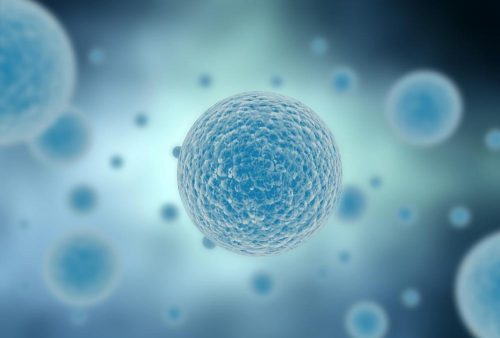Cells hold key information for understanding the human body, particularly for diseases associated with cell development. For many years, researchers have struggled to measure cell mechanics without destroying the cell. Most methodologies require squeezing the cell and watching it deform. With these constant disruptions, the cell is often harmed, making time course measurements virtually impossible.
Recently, a team of researchers at the Massachusetts Institute of Technology found an alternative to the typical brute force methodologies. Joon Ho Kang, a senior graduate student in the Manalis lab, along with other researchers, discovered the power of acoustics to measure the stiffness of cells, introducing a new methodology called Size Normalized Acoustic Scattering (SNACS).
This technology allows for non-invasive measurement of cell stiffness, which is often determined by the structural components of the cell, like the cytoskeleton. Thus, measuring stiffness of cells can help determine any structural changes or where cells are in the cell cycle, potentially enabling the comparison of diseased and healthy cells. With SNACS, researchers can monitor the stiffness changes over several generations of cell division or at multiple timepoints.
Like some of the most powerful discoveries in science, this one was made accidentally. The Manalis lab had previously invented the suspended microchannel resonator (SMR) for measuring the buoyant mass of cells. “The SMR is a cantilever with a hollow channel for cells to pass through. It’s like a diving board; the mass of the cell affects the vibration of the SMR,” Kang said. The node, a position on the SMR where there is no vibration, should theoretically lead to a frequency change of zero at this point in the channel. However, as Kang noticed, node deviation prevents this from happening: the vibration of the cantilever with a specific pattern creates an acoustic standing wave within the cantilever that then gets distorted by the cells traveling along it. “It is almost like when you are playing the flute and a particle, say a rock, is placed in the flute. This creates a different wave with a different frequency that is slower because of this obstruction,” Kang said.
Kang and his team of researchers connected this observation to the measurement of cell stiffness. “Upon uncovering this distortion, we realized that the distortion depends on the size and stiffness of the cell,” Kang said. “If the cell size is normalized, we eliminate the confounding factor and we can then figure out the stiffness of the cell: a higher node deviation signal height indicates higher stiffness.” In this way, the cell is not manipulated intrusively; instead, information is gathered through the cell’s interaction with an acoustic wave, which does not significantly impact the cell.
This concept may seem simple, but the process to get there was not a smooth one. “Since this experimentation was driven by an observation, it is not like we were knowledgeable in this area of acoustics simulation,” Kang said. Thus, he took it upon himself to figure out how to run simulations to correct cell information and the acoustic data—a difficult but rewarding process.
This technology has implications not only for cell research, but for broader research as well. SNACS allows for better understanding of diseases at the cellular level as researchers can more easily compare different cells and gather information on diseases and treatments. With acoustic scattering, making non-invasive mechanical comparisons of cancer cells and normal cells is now possible. In terms of medicine, SNACS allows us to collect samples of diseased cells and measure their stiffness, which can act as a biomarker to distinguish diseased cells from healthy ones. Then, we can put the cells through experiments with different drugs to see if any conformational or functional changes occur.

